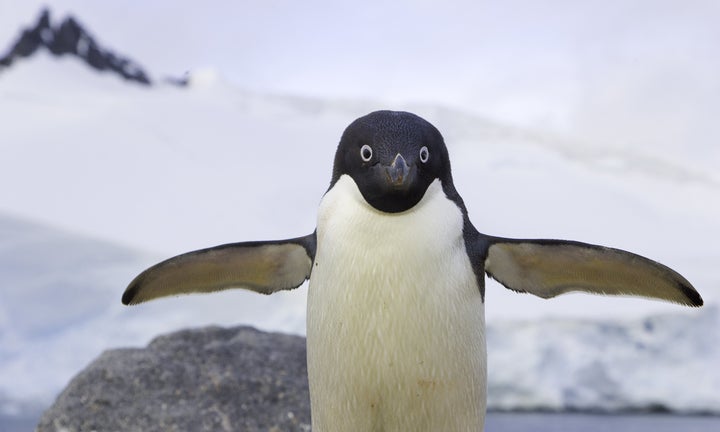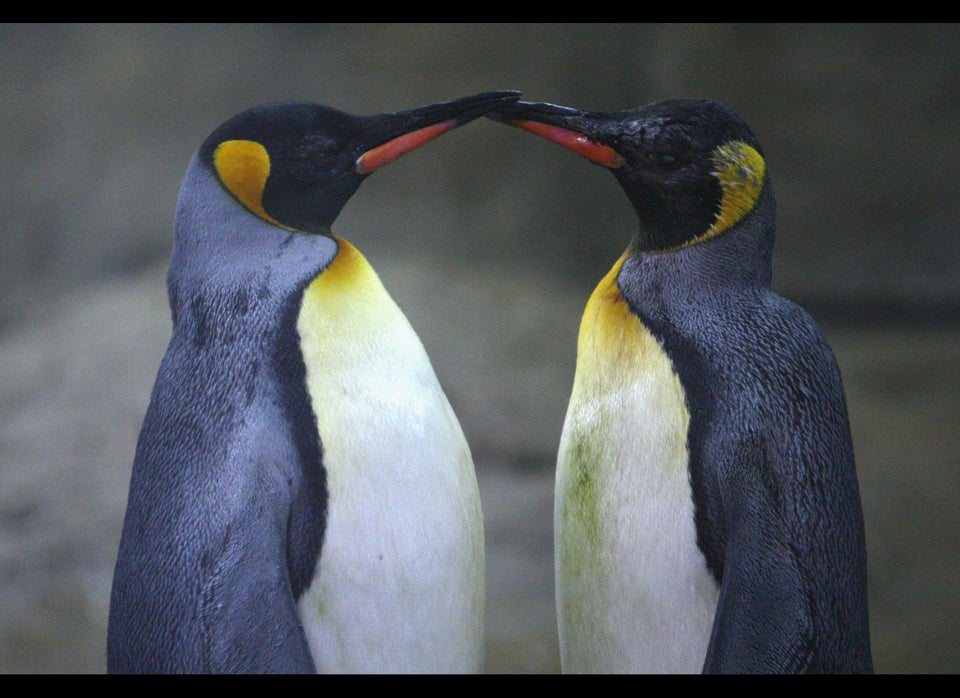
Many winter-weather travelers have experienced delays due to aircraft needing to be de-iced, but now scientists may have found a way to improve the de-icing process -- and it involves penguins.
The birds are able to navigate between very cold water and icy land without icing over themselves due to the water-repellent properties of their feathers, according to new research.
"We found the penguin feathers to be superhydrophobic meaning they are extremely water repellent," Dr. Pirouz Kavehpour, professor of mechanical and aerospace engineering at UCLA and a co-author of the research, told The Huffington Post in an email. "We believe there are lessons we can learn from the structure of penguin feathers to design effective anti-icing surfaces for aircraft wings, power lines, and many other applications of significance."
Anti-icing surfaces could mean that airliners may no longer be as vulnerable to ice buildup on their wings and tails, which can alter airflow around the plane and reduce the lift force that keeps the plane in the air -- something that could cause a temporary loss of control. Such effects of icing are believed to have been a factor in about 8 percent of fatal airline accidents from 1995 to 2000, according to the National Oceanic and Atmospheric Administration.
To better understand how penguin feathers are able to stay ice-free, Kavehpour, along with University of Massachusetts professor Dr. Jonathan Rothstein and their colleagues, analyzed some feathers that were donated by SeaWorld San Diego under a scanning electron microscope, Discovery News reported.
The researchers took a close look at the feathers of gentoo penguins, which live in Antarctica and the southernmost parts of South America, and compared them with feathers from the Magellanic penguin, which lives in warmer climates in Chile, Argentina and even Brazil.
The researchers noticed that the gentoo penguin feathers had an additional hydrophobic coating of oil not seen on the other feathers -- the preen oil is applied to the feathers from a gland near the base of the penguin's tail.
The researchers also noticed that the feathers had tiny pores that trap air and help make the surface superhydrophobic. Once a drop of water hits a superhydrophobic surface, it takes on a spherical shape, and that sphere-like geometry may also play a role in delaying ice formation.
"The change of shape slows the rate of heat transfer from the drop to the feathers. As a result, the droplet takes a significantly longer time to freeze," Kavehpour said. "At the same time, because the penguin feathers are superhydrophobic, water drops are extremely mobile so the water drops simply slide off the penguins before they have a chance to freeze."
The researchers concluded that similar superhydrophic properties could be applied to the surfaces of planes in the future, instead of the chemical de-icers that currently are applied to planes.
As Kavehpour said in a statement, "It's a little ironic that a bird that doesn't fly could one day help an airplane fly more safely."
Also on HuffPost:

